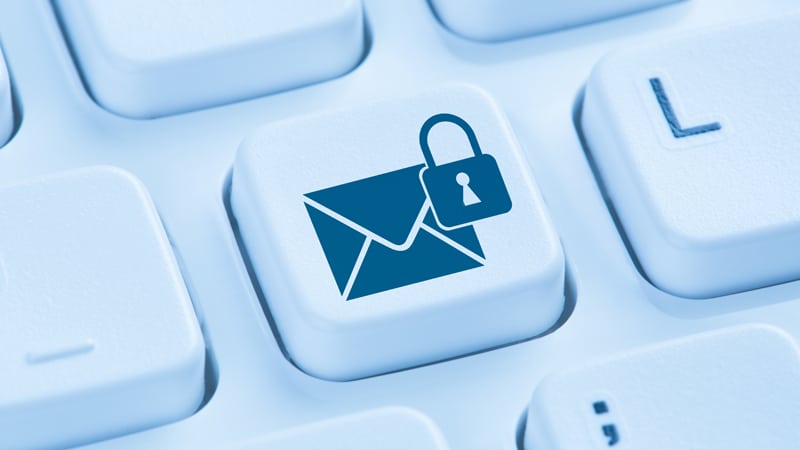

Your business handles a lot of data each day. That data comes in the form of emails, files, and many other types of information. When that data contains sensitive material (such as company secrets, employee or client information, passwords, etc.), the last thing you want is some malicious, third-party intercepting it and using it against you.
It happens. Often. Sometimes it occurs when you are on a public network, and sometimes that data can fall prey when it’s on your own internal LAN. And the truth is, the larger your small business gets, the more likely this can happen. You do not want to fall victim to such data theft! Fortunately, there are ways to prevent this from happening. One way is via encryption.
In the simplest terms, encryption is a means of encoding an email or a file in such a way that it can only be decoded with a unique key. That special key is a part of a key pair, for which there are public and private keys. When you want to encrypt a file or email to be sent to someone, you encrypt with the recipient’s public key.
After you send the message or file to the recipient, they can then decrypt the data or message with their private key. In other words, the only way to decrypt a file or message is when the private key matches up with the public key used for the encryption. No match, no decryption. No decryption, no data.
Most every email client and/or service is capable of using encryption. Some clients (such as Mozilla Thunderbird and Gmail) do require a third-party add on. Other email services, such as Office 365, include encryption out of the box. Although it sounds too challenging for the average user, it’s a fairly straightforward process once in place.
The reason why your small business should be using encryption is simple—privacy. When you send an email with or without attachments, anyone who has access to the email client can get access to them.
Consider this: your company deals with a Latin American outsourcing company, and you have to share a large amount of information with it on a daily or weekly basis. That information might contain code for an application you are developing for a third party. At this point, you have three parties directly or indirectly involved with this communication.
What happens when you send out that plain-text (aka unencrypted) email, and a malicious actor intercepts the communication? You have unwittingly released data that could possibly compromise the project. To make matters worse, you may not know the data was stolen.
The data theft, in that instance, can lead to some pretty dire outcomes. The thief could use it to hack networks, use backdoors in software, and steal data from consumers that might wind up using the application once it’s been released.
Encryption should be considered a must-use for all businesses. But there’s a hurdle in the way—convenience. Most end users don’t want to have to add yet another step in their already busy days. To encrypt an email, you have to enable encryption on your email client, have the recipient’s public key, write the email, encrypt it, and send it.
Most people want the path of least resistance, and no email client has managed to make encryption happen automatically and without end-user assistance. So even though the end result would be a significant privacy and security improvement over default email client behavior, people avoid it because it adds steps and time to a process they repeat over and over throughout the day.
However, it’s not just time. To many users, encryption is confusing. Key pairs, passphrases, encryption extensions … all of this is outside the average user’s wheelhouse. But it’s worth the time and effort. Why? Again, privacy.
The last thing you want is to have your company secrets stolen. It happens. No matter how much time and money you spend on hardening your company network, you cannot control what happens when those communications leave your LAN. Without encryption, once the email or attached file is in the hands of the recipient, anyone could view your data.
Because of this, you should consider setting company policies that include email and attached file encryption. Yes, it will take your employees time to get used to the added steps, but once they’re on board with the process, you can rest assured that the information transmitted will be much more secure.
If you are interested in even more technology-related articles and information from us here at Bit Rebels, then we have a lot to choose from.
Warehouses are changing fast, pushed by rising demand, tighter safety standards, and the constant shuffle…
Cybersecurity is no longer a task for governments and large corporations in the connected world…
Fame is a powerful force that extends beyond a celebrity’s lifetime. Icons like Marilyn Monroe,…
In an era where sustainability, transparency, and corporate responsibility are paramount, businesses are under mounting…
In today’s fast-paced and competitive business environment, managing intellectual property (IP) is more crucial than…
Working in tight or confined spaces is one of the most common challenges in modern…